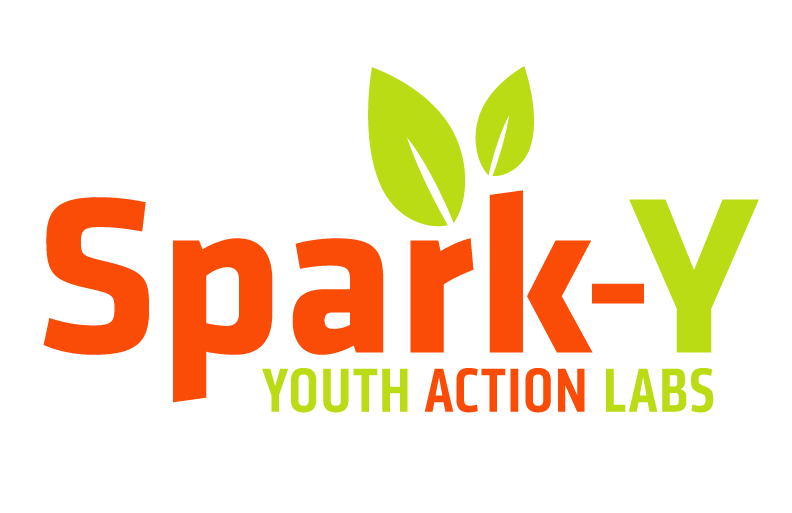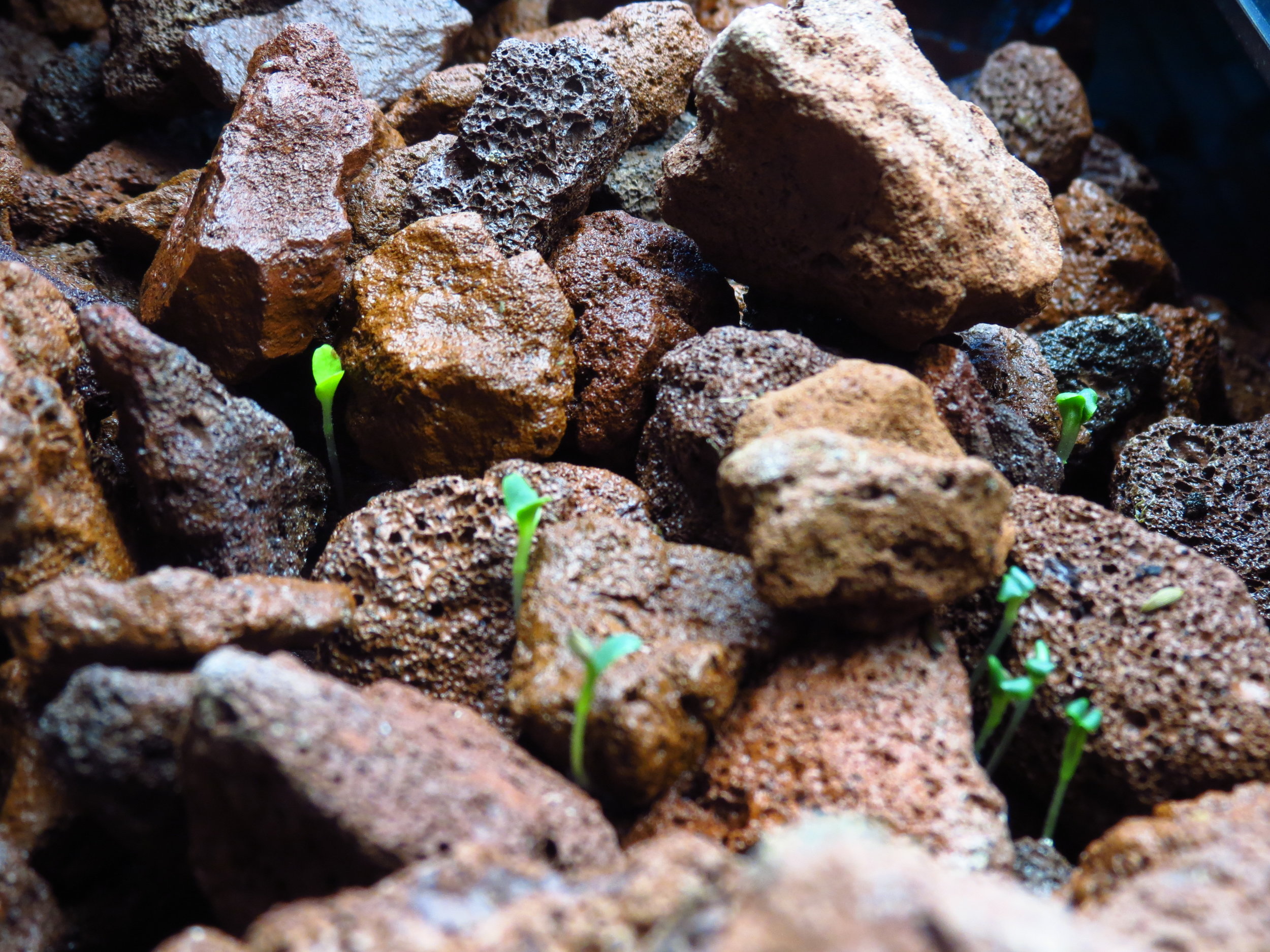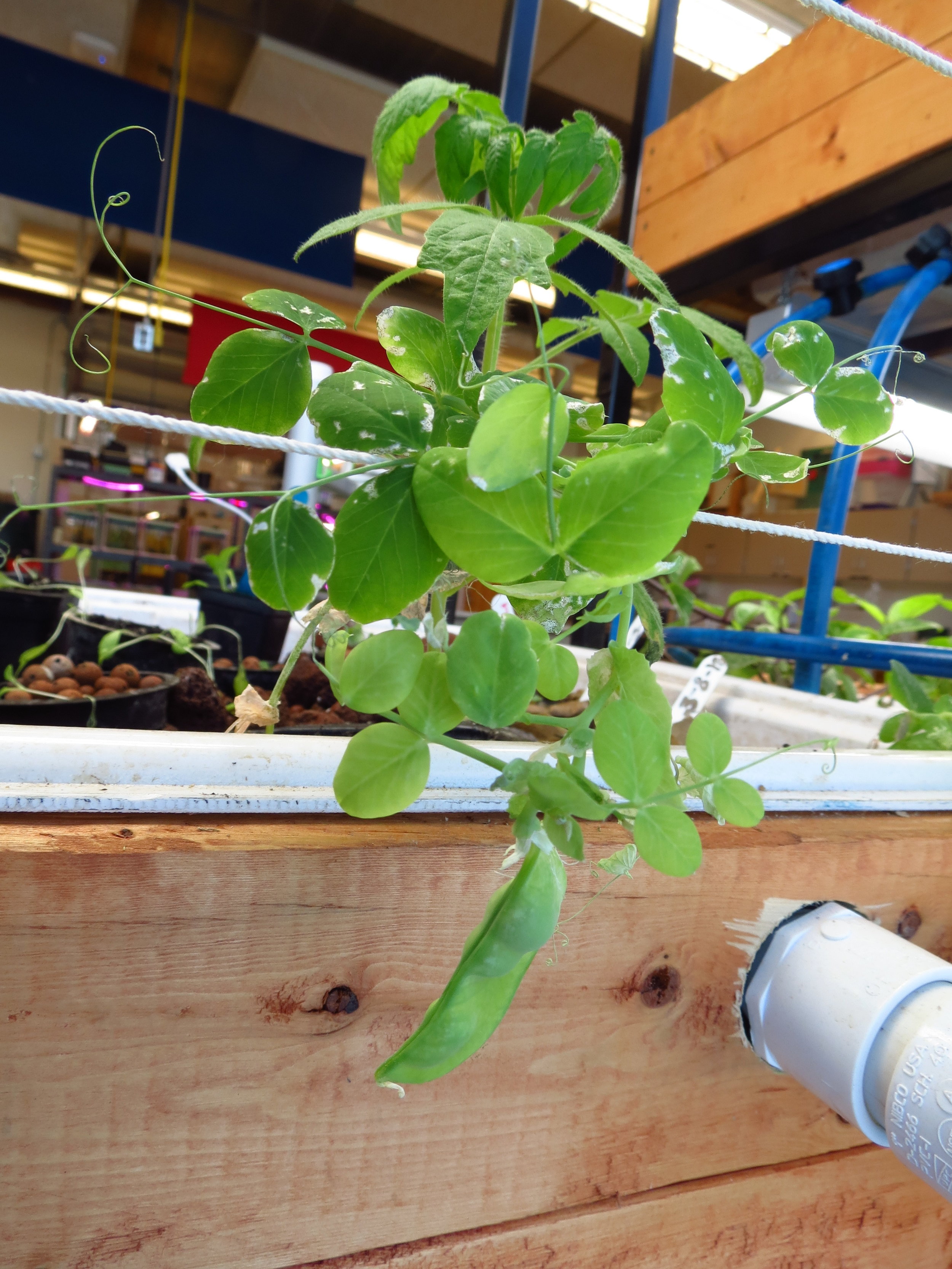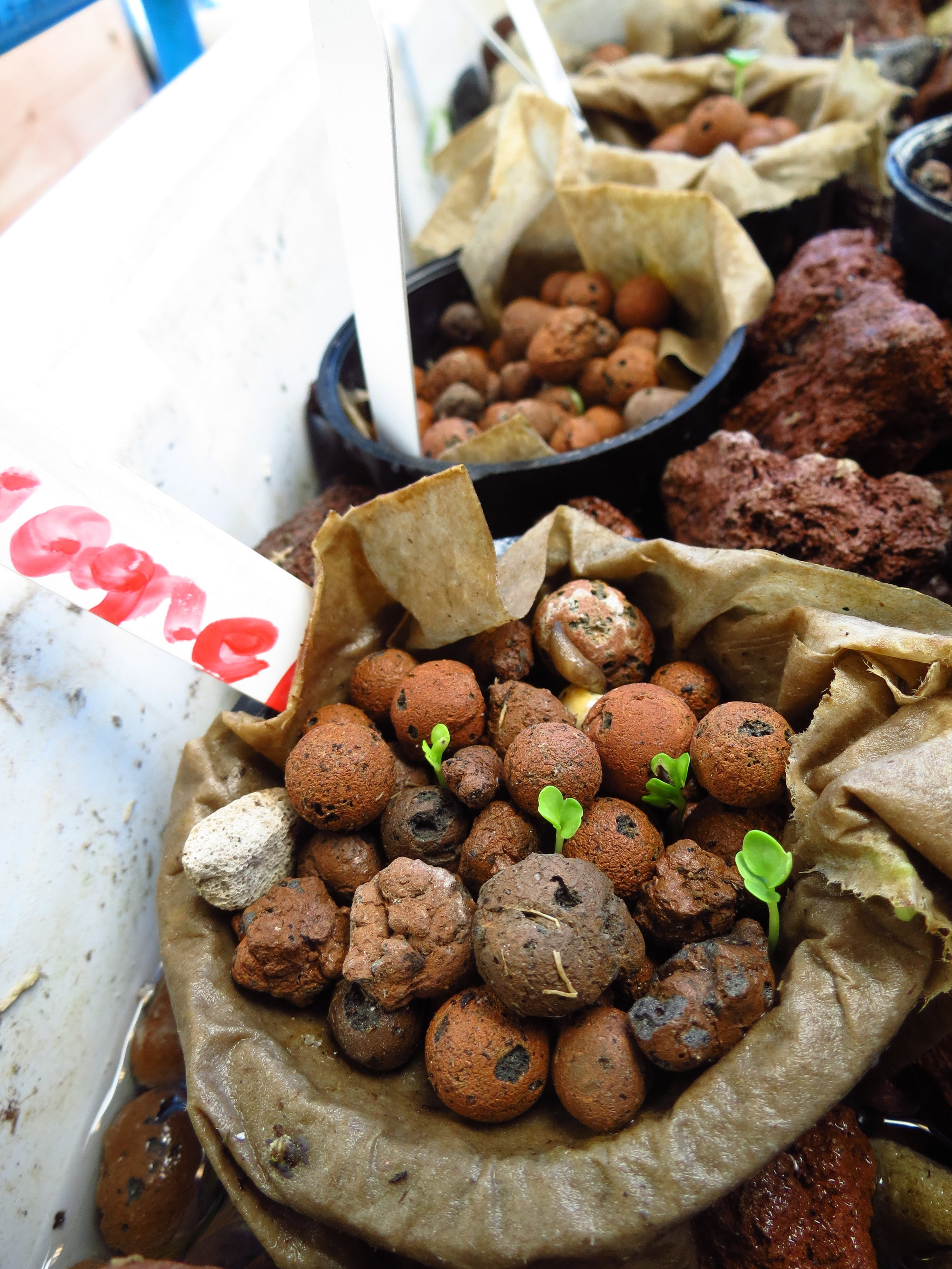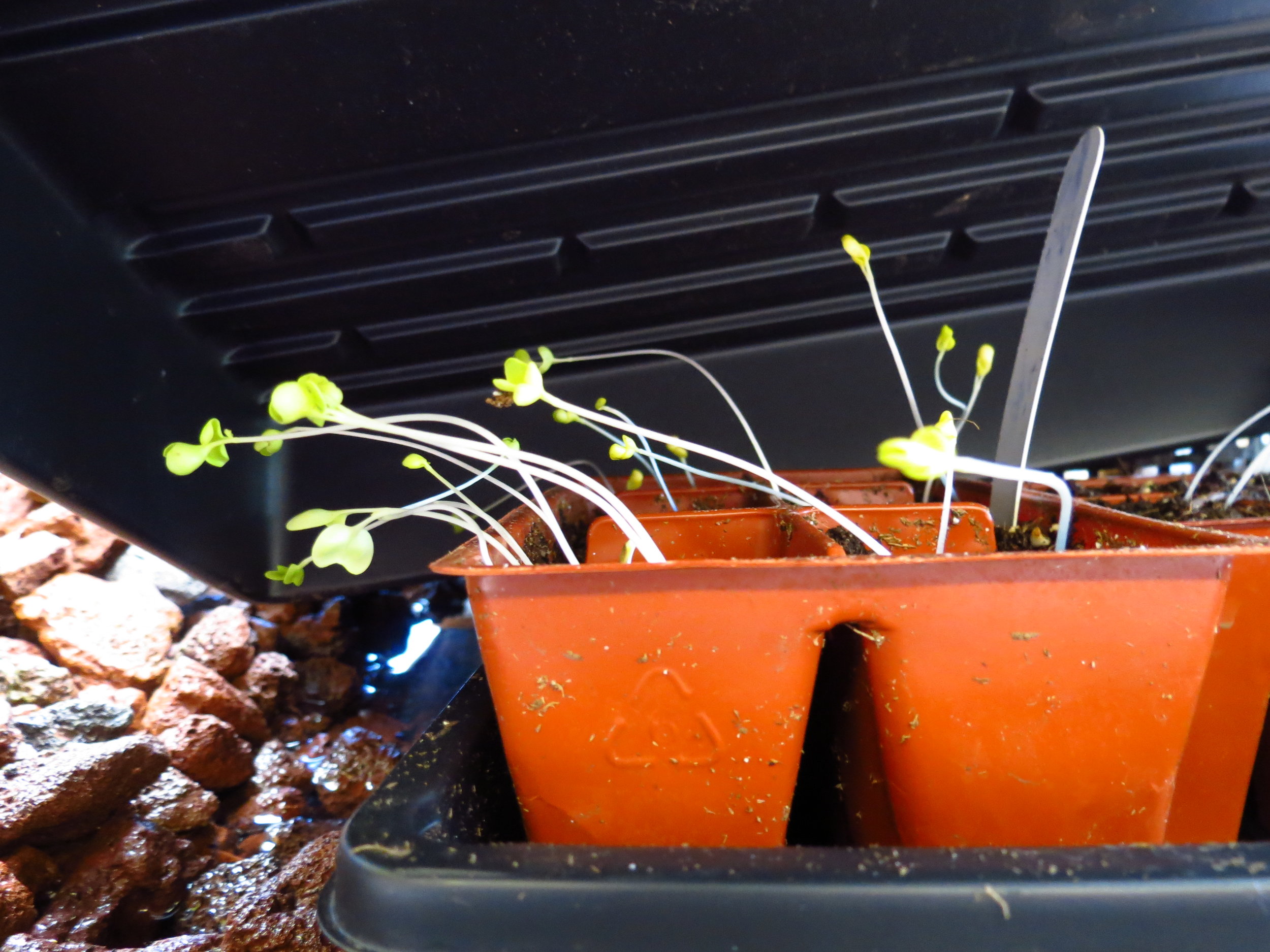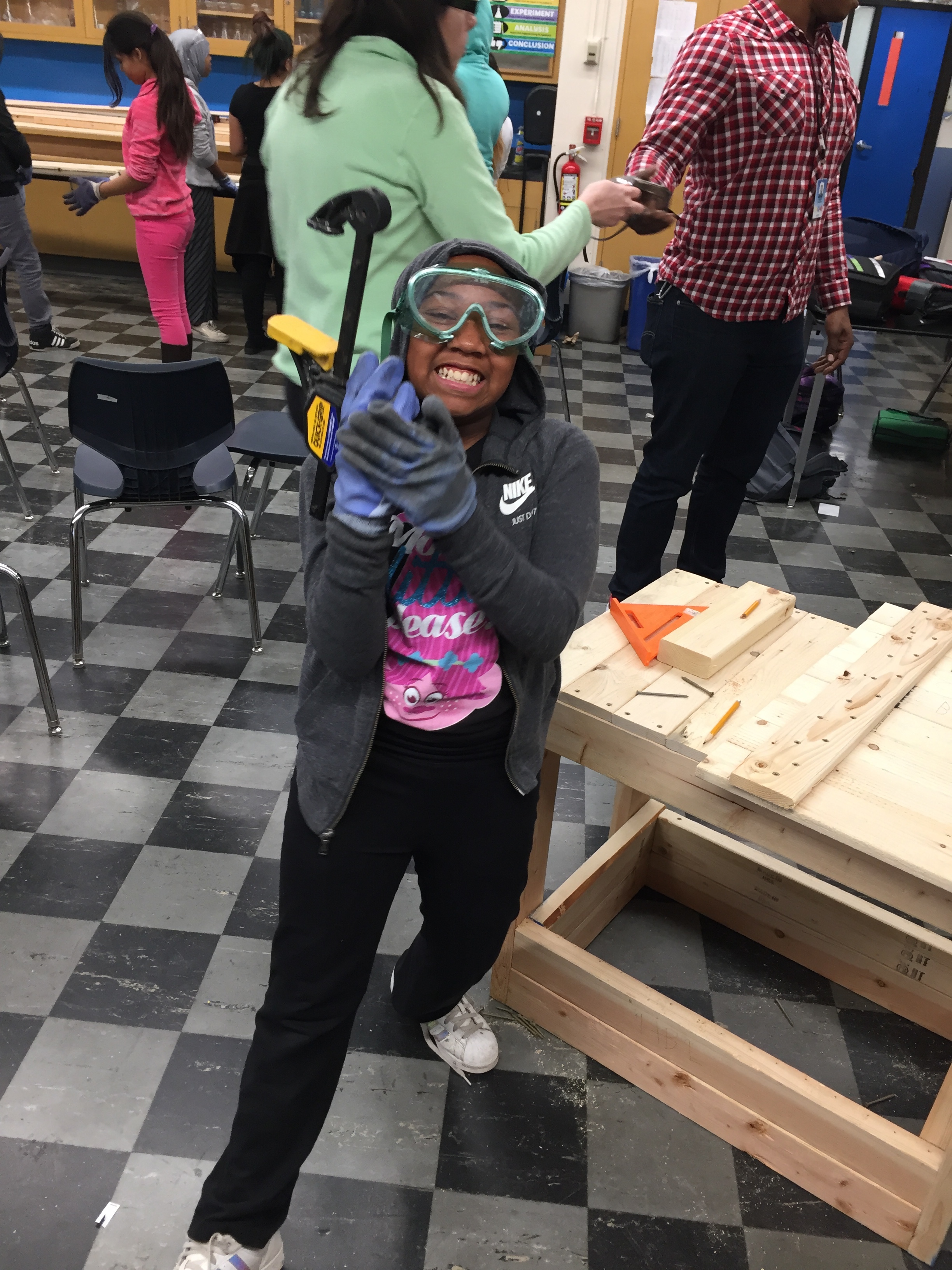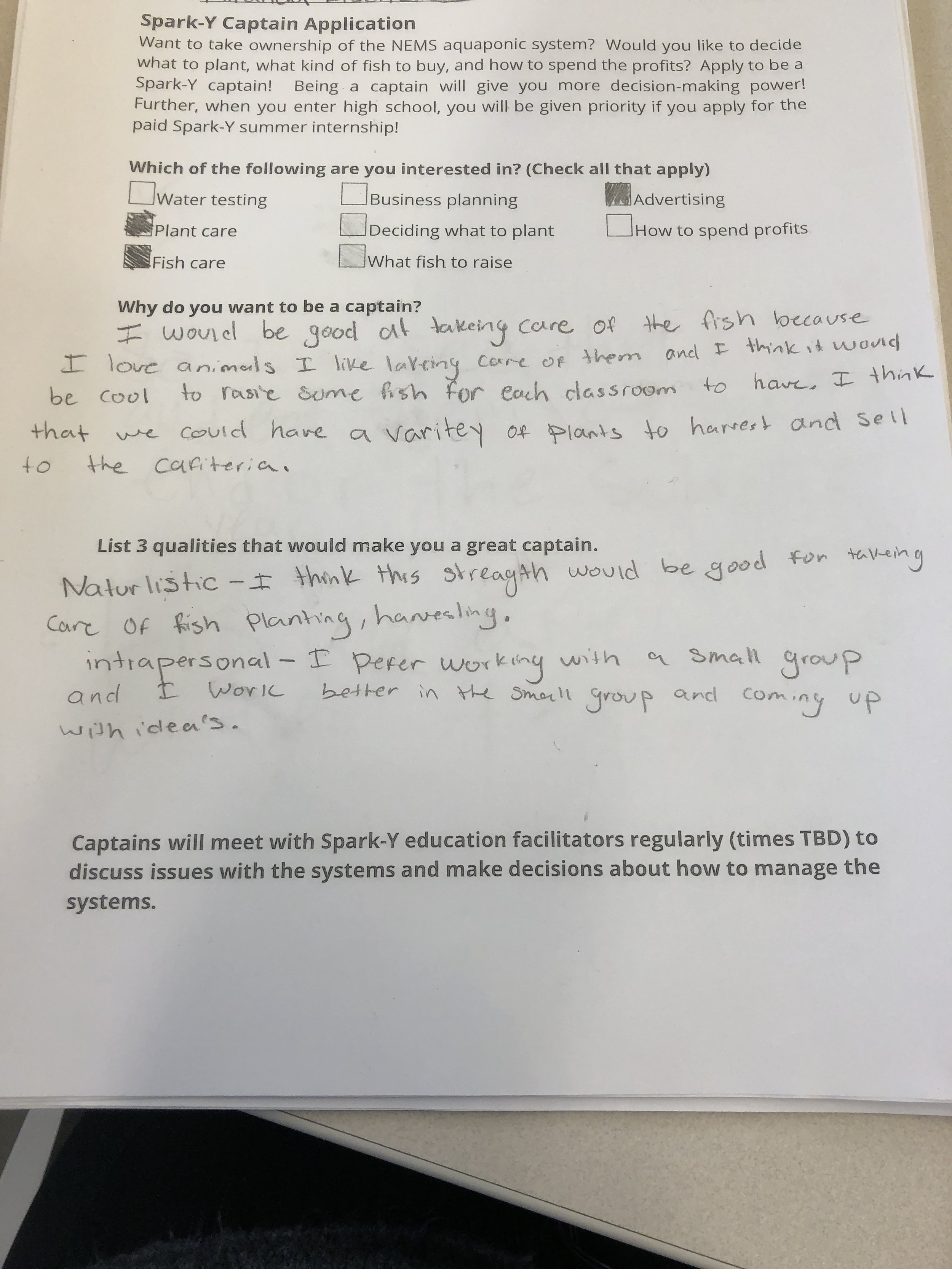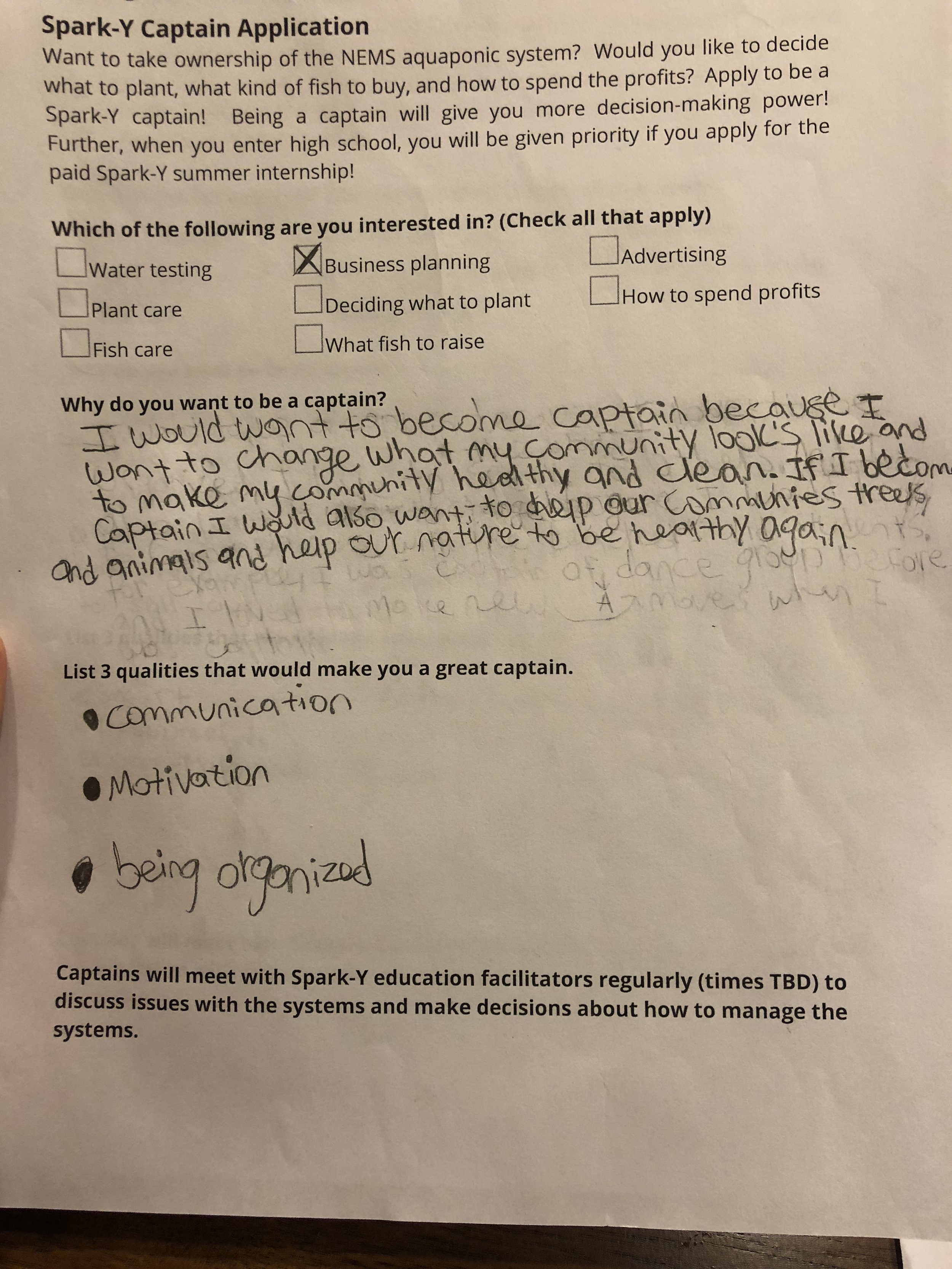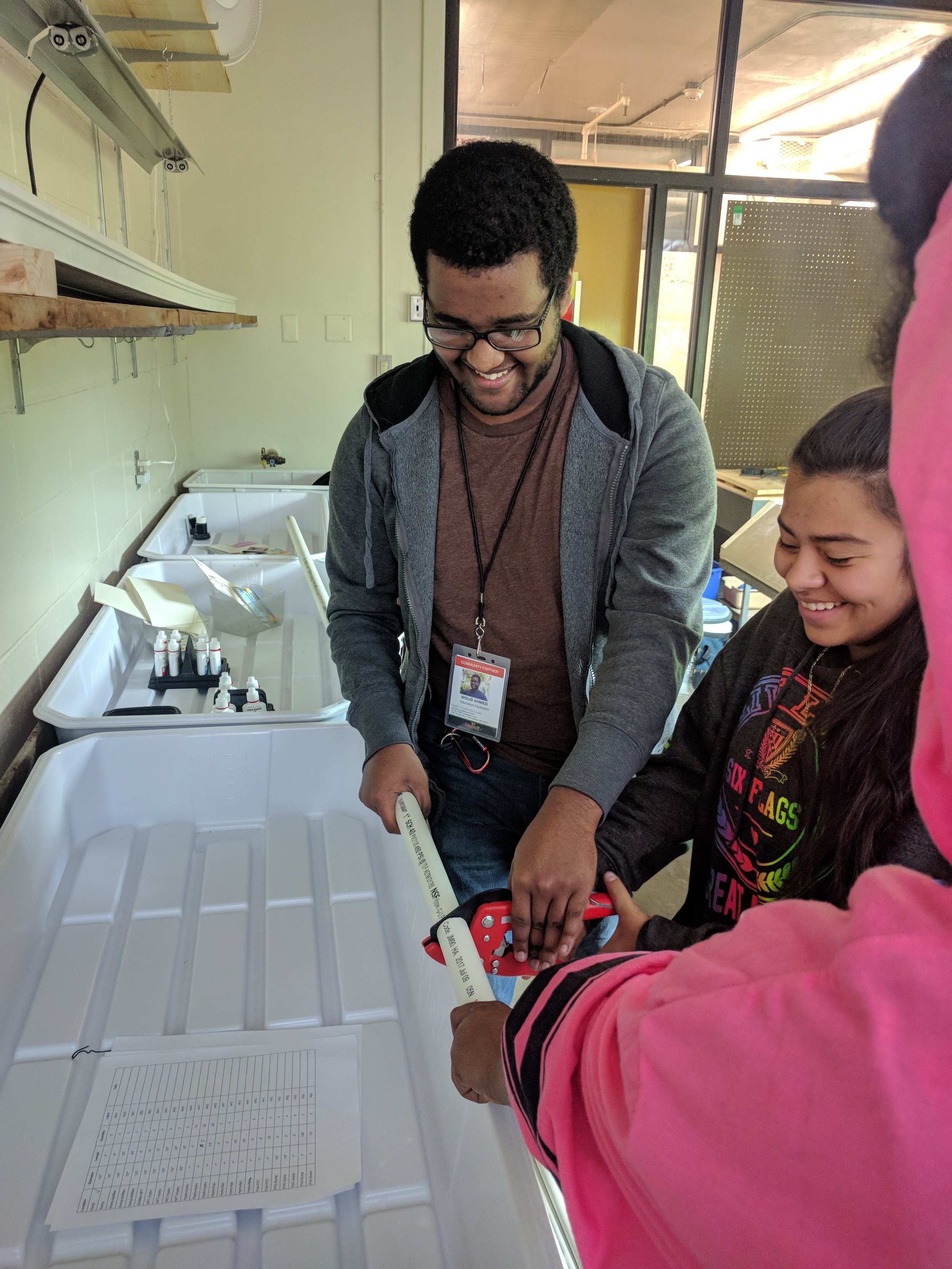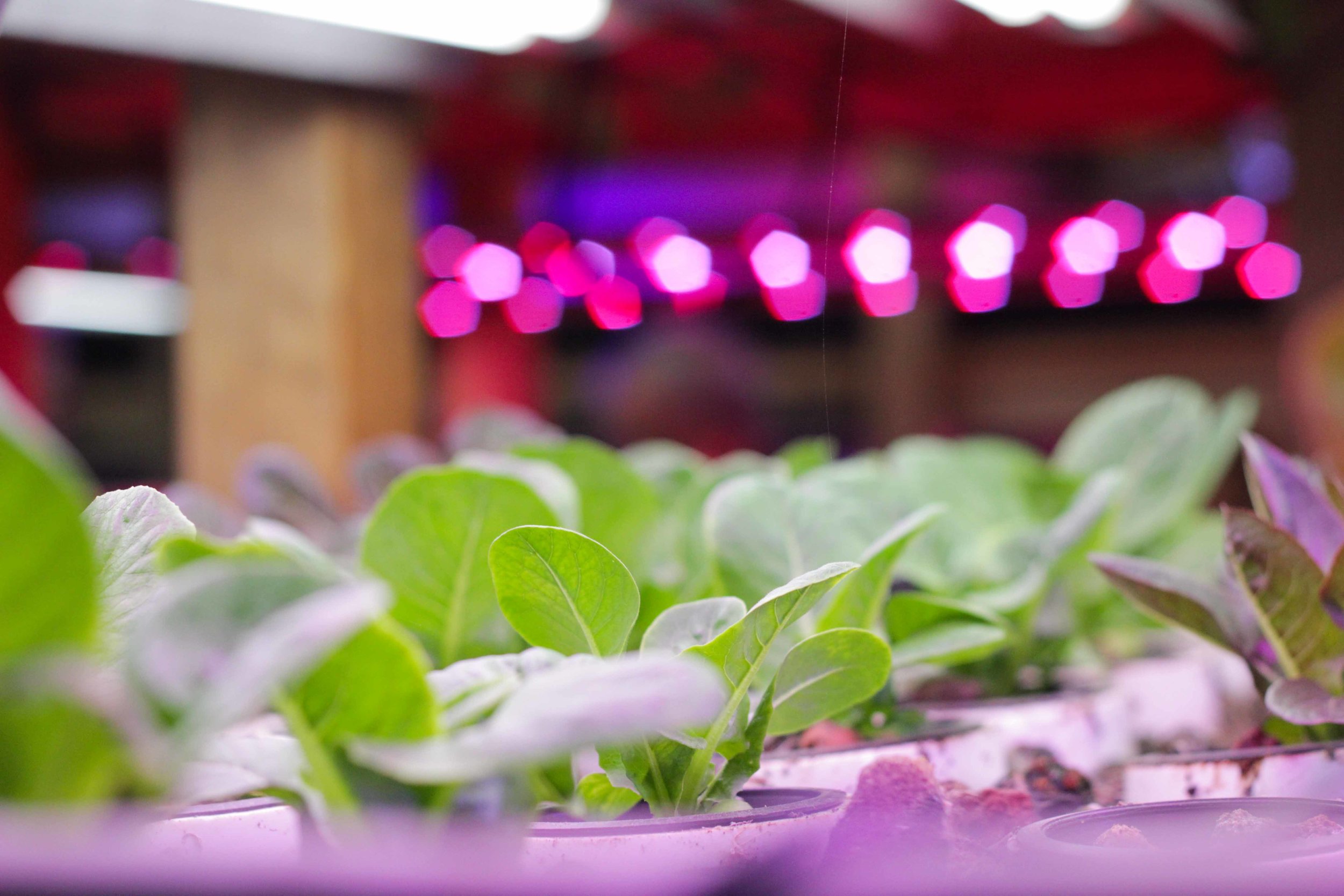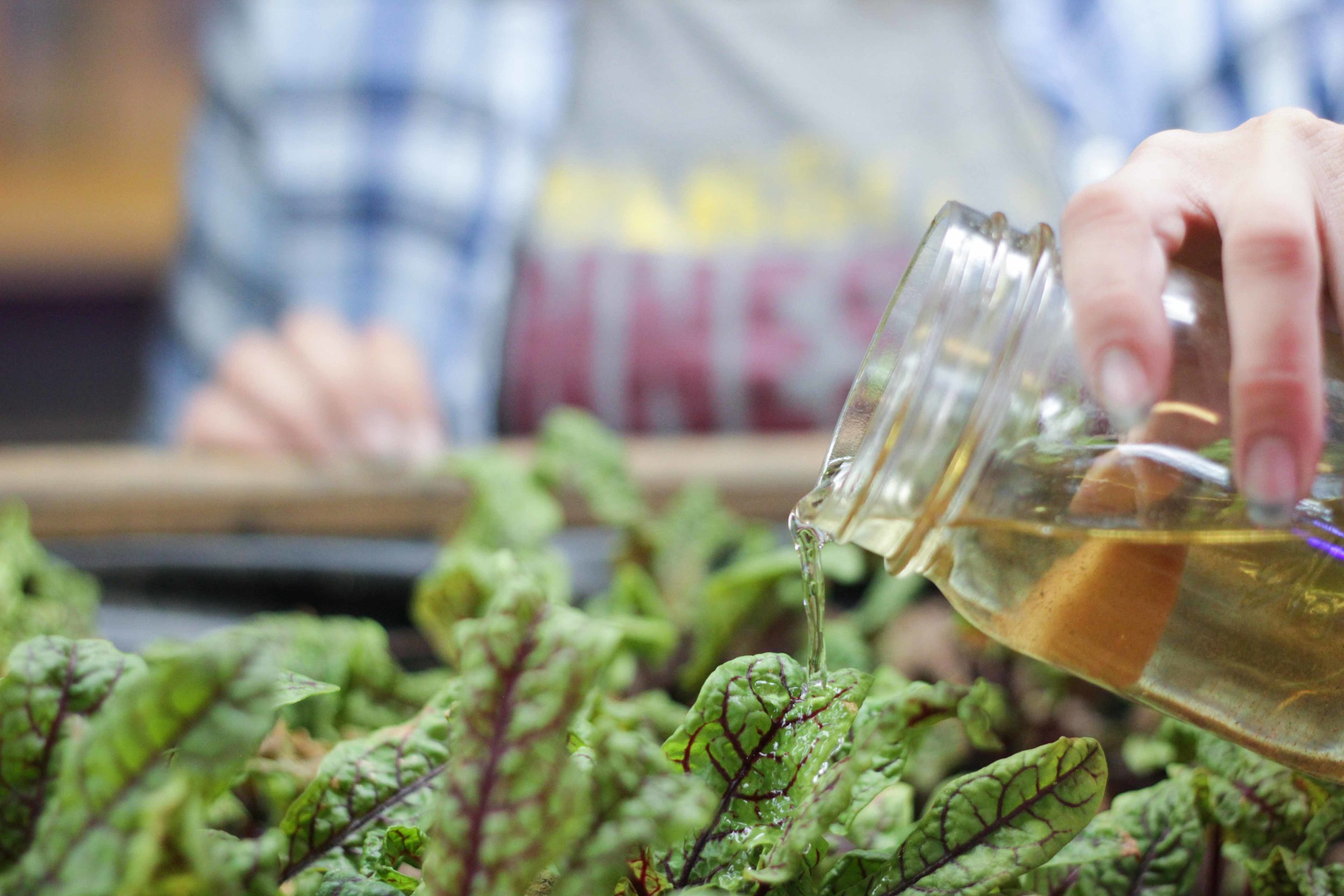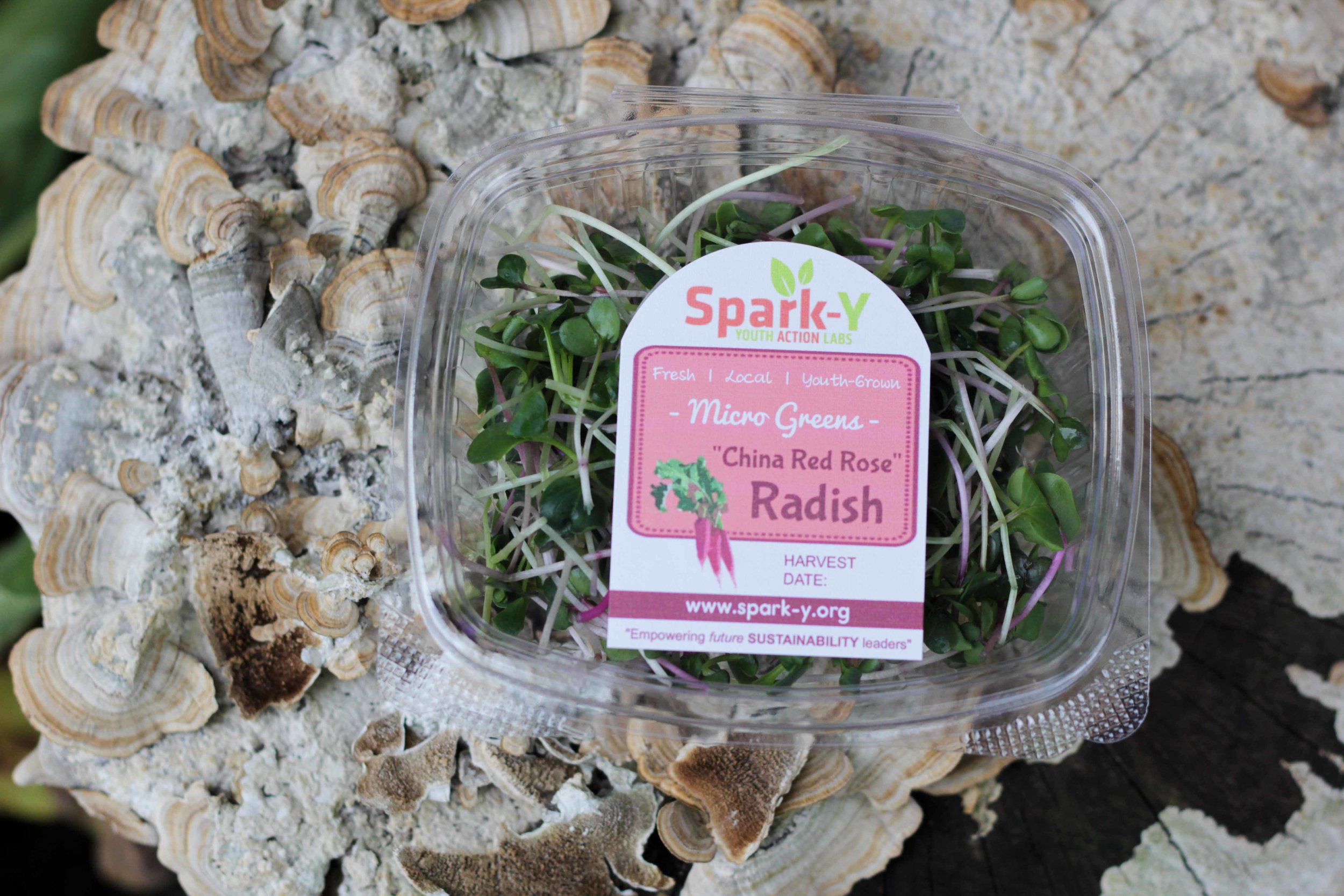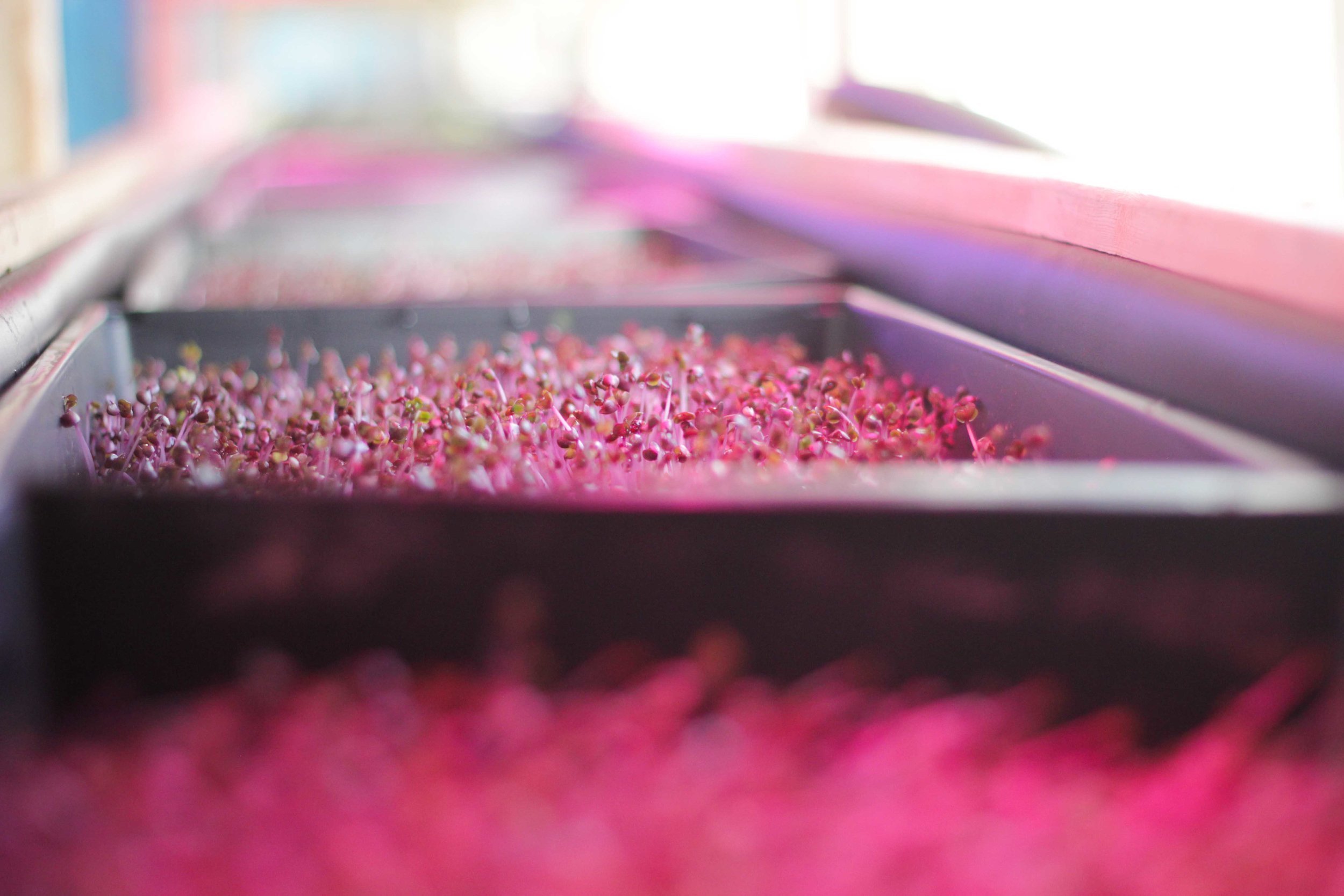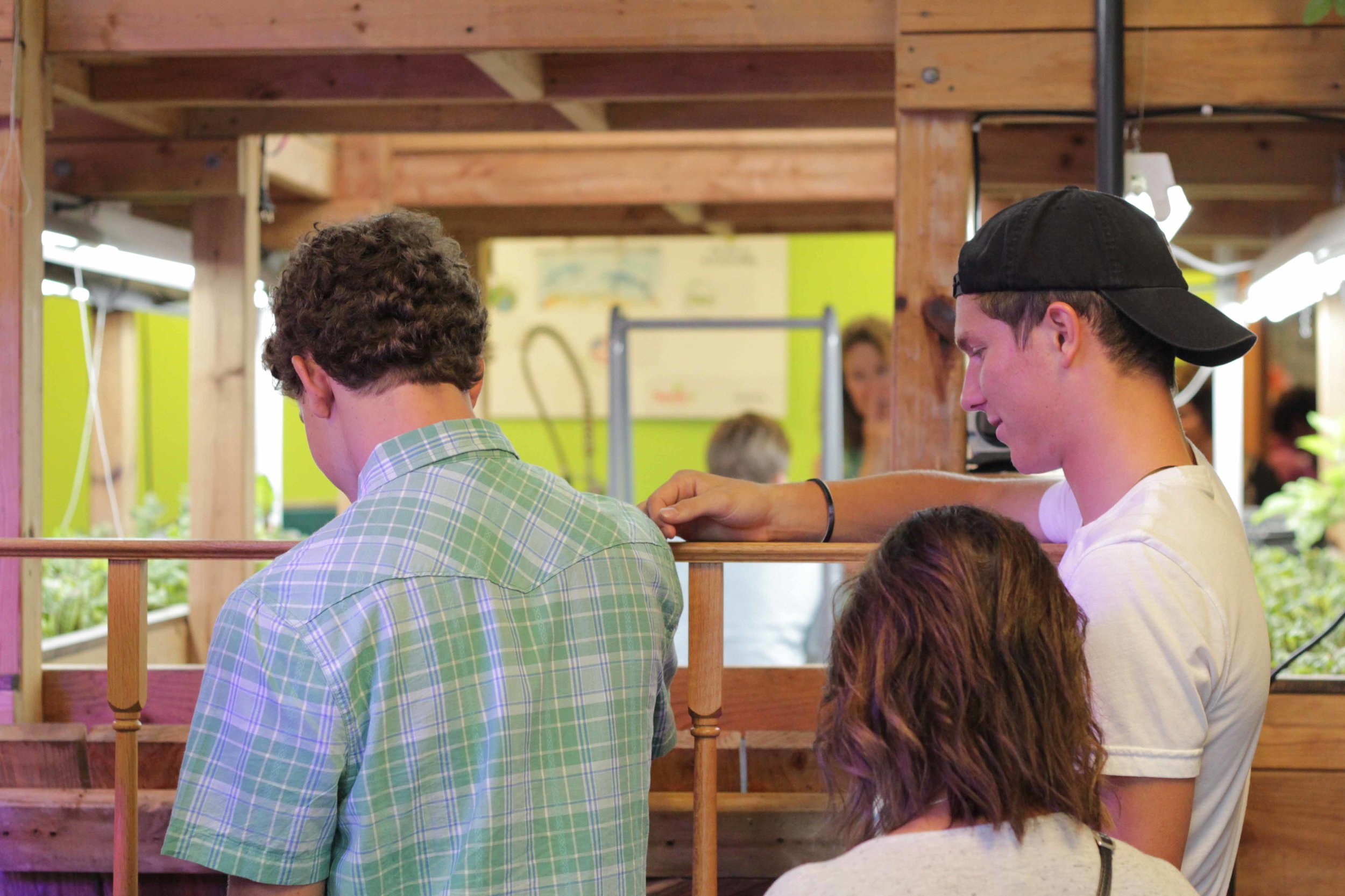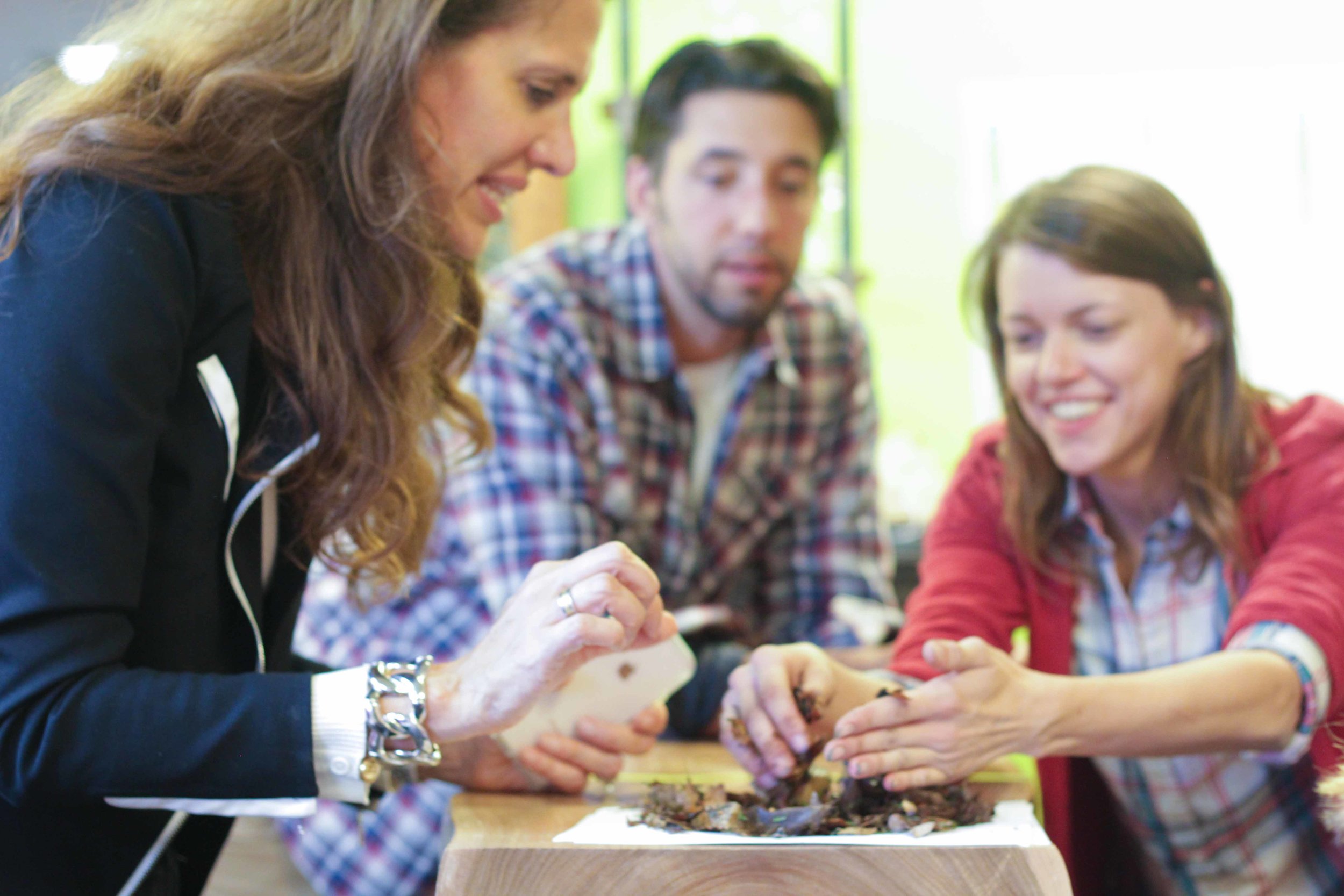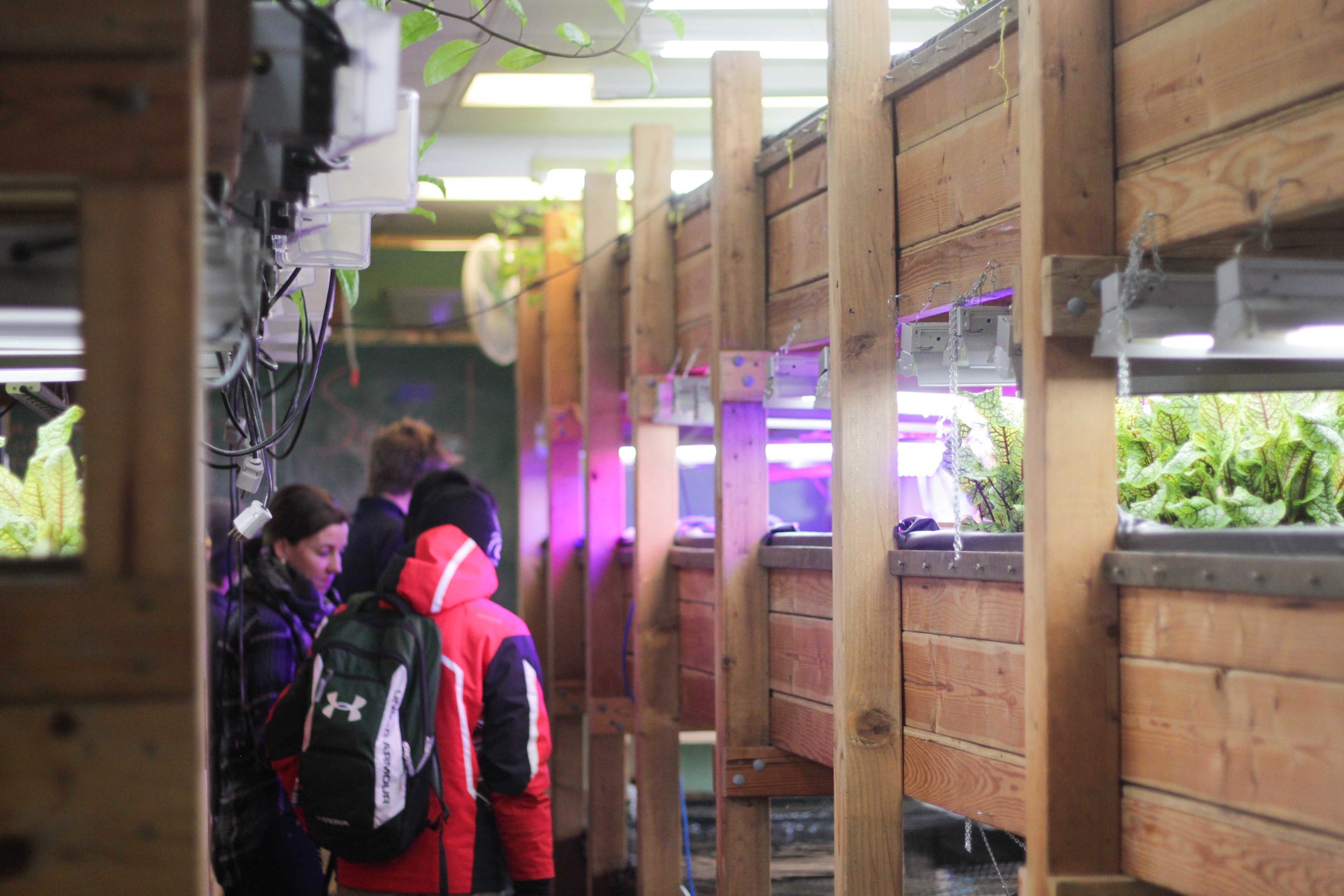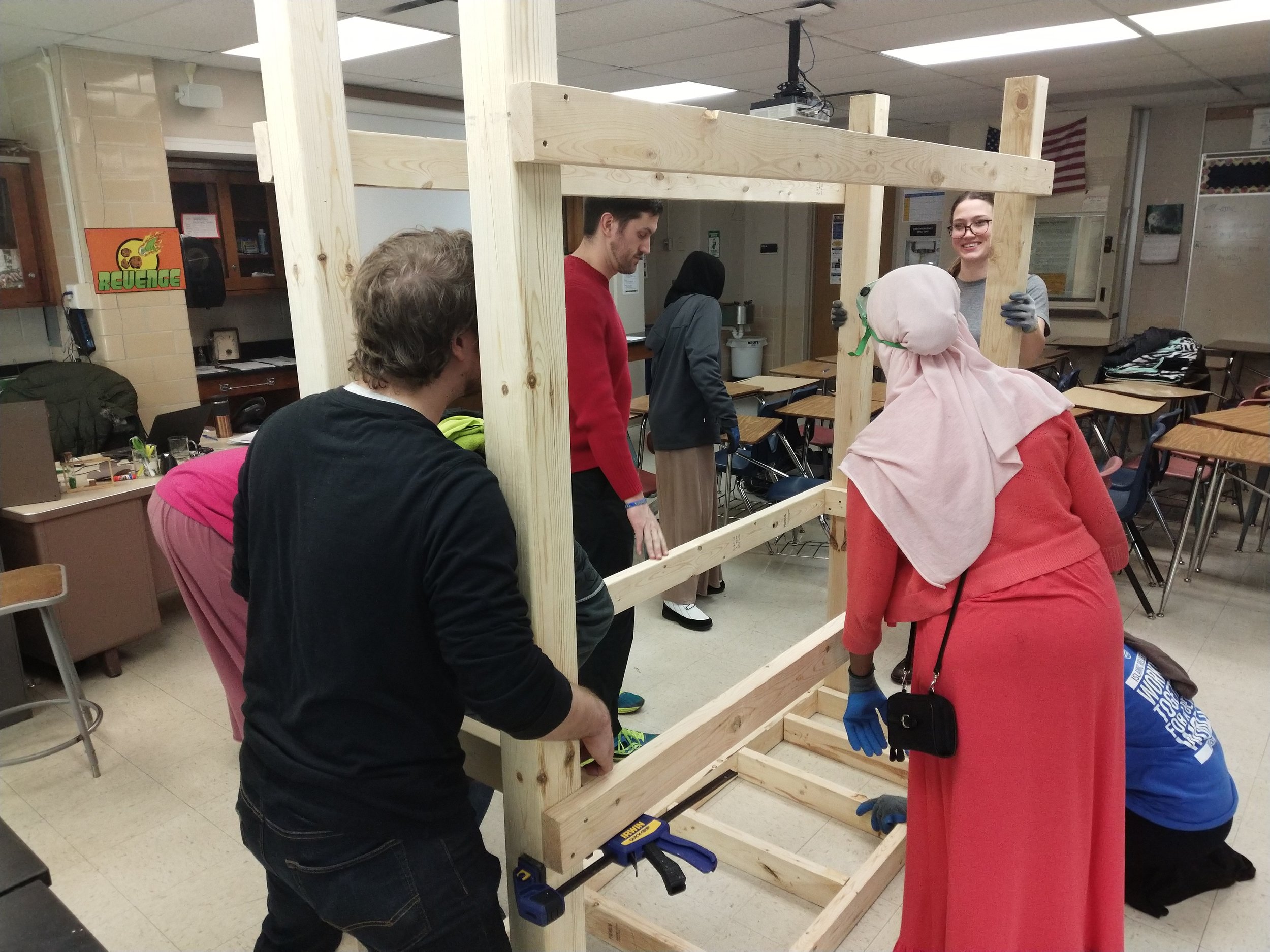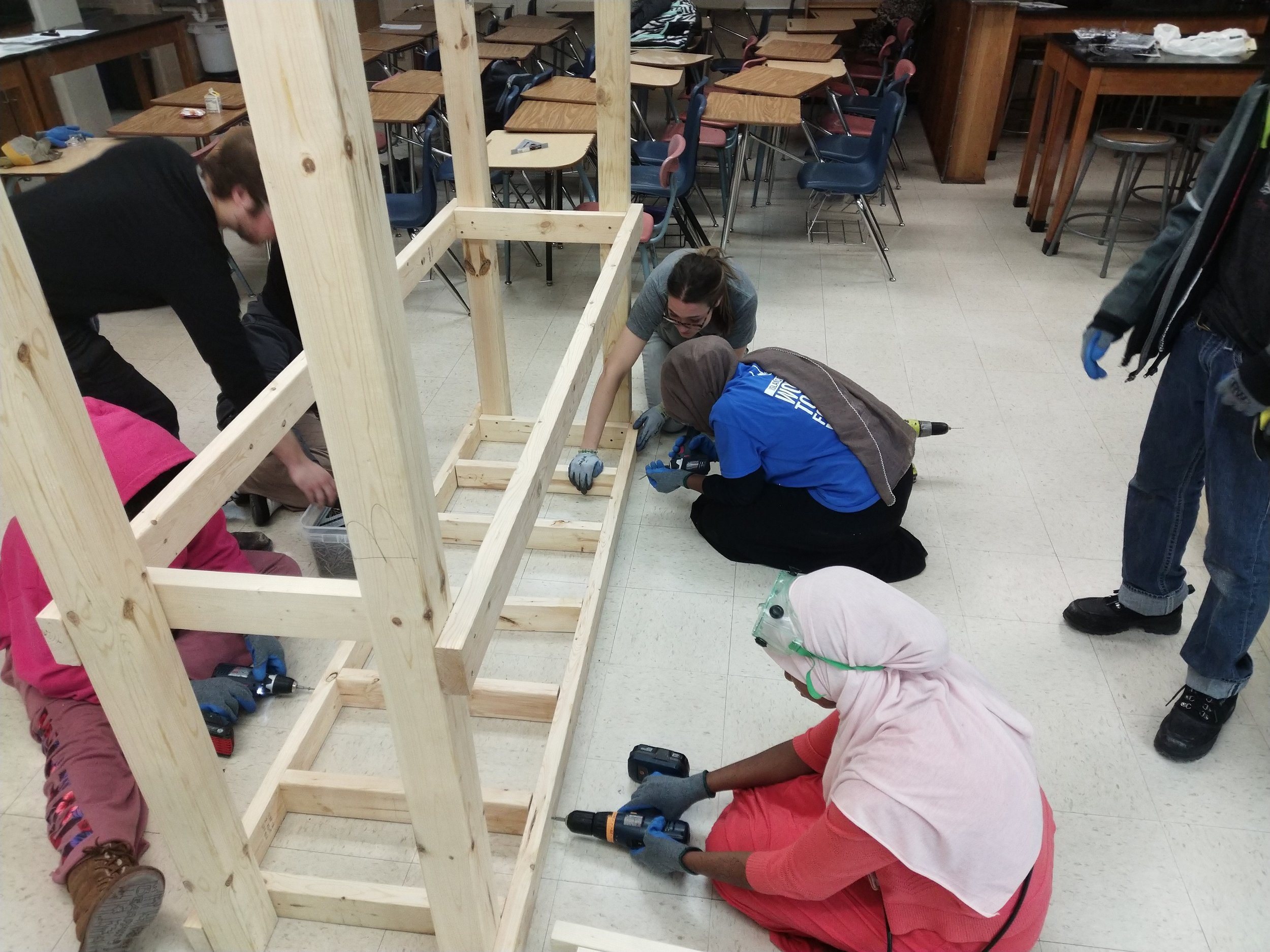The following blog post was written by Cecelia Watkins,
Spark-Y Education Facilitator.
When I learned I’d be working with 3-5th graders at Crossroads Elementary—a year-round, public STEM school—I was pumped. As the Crossroads Action Educator, I get to teach seven classes a week in the school’s science classroom and Inquiry Zone, where I develop and facilitate hands-on sustainability projects.
I remember on my first day one student asked: “Are you a scientist?” I smiled and said without thinking “Yes, we’re all scientists here!” The kid tilted his head sideways and raised a skeptical eyebrow. “Okay sure, but are you a real scientist?”
I have to admit, the words struck a note of dread inside me. Here I was, trying to earn the respect of these elementary kids, but was I really a scientist? I didn’t have a degree in the hard sciences. I haven’t worked in a research facility since one summer in college. I wasn’t even particularly knowledgeable about aquaponics!
Aquaponics
How hard can it be?
I decided I would do whatever it took to prove myself to these students by making the aquaponics system at Crossroads explode with happy fish and healthy plants. I rolled up my sleeves, planted seeds, and tossed the tilapia their pellets. But then I noticed my pea plants were freckled with white rot, my beans were turning yellow, and the tilapia became so aggressive they started killing each other. Disaster! The reality is that for all the shiny promise of aquaponics, it actually takes a fair bit of expertise—or experimentation—to create a productive system.
Tilapia
Dominance and aggression!
Sad broccoli
Luckily, the Crossroads students have been more than willing to learn alongside me. The 5th graders are actually in the midst of conducting experiments to determine how different variables affect the health of an aquaponics system. In pairs and groups, these students constructed their own 10 gallon aquaponics tanks and chose which independent variable they wanted to adjust. One group decided to only fill their tank half full, another chose to use adult plants instead of starts, and still another decided to double the oxygen input. Other students are experimenting with number and type of fish, number and type of plants, and type of grow media. After weeks of patient waiting and diligent water testing while the nitrification cycle got established, we at last added fish and plants this past week. Stay tuned for their results!
The 3rd and 4th graders have started their own aquaponics germination experiment recently. As we began learning about plants, we asked what a seed needs to grow. Students were quick to answer: sun, soil, and water! Some all-stars even thought to add air and space to the list. I decided to put their assumptions to a test. Each class was divided into three seeding groups. One group’s seeds would get everything: they’d plant in soil, be placed in a grow bed (giving them access to water) and they’d get plenty of light exposure. The next group would be exactly the same except the containers would be covered and kept in the dark. The last group would be totally different: instead of planting in soil, they’d plant their seeds in hydroton, on a damp piece of paper towel. After cleaning up from our flurry of planting activity, we all made predictions: would the seeds without light and soil be able to sprout?
3rd grade experiment
Seeds in soil, seeds in hydroton, and seeds in the dark.
I honestly wasn’t entirely sure myself what would happen. We at Spark-Y have a tendency to say we’re “laying the tracks as the train is approaching,” and I think what we usually mean is that we’re constantly pushing our growing edge, constantly adapting, and constantly evolving. As much as it can be stressful to be responsible for the hundreds of little lives that make up an aquaponics system, it’s also exhilarating to be learning alongside the students. When I peeked into the darkened planters I felt a thrill to see the little plants reaching out. My excitement doubled when I imagined how fun it would be to reveal the results to the students the next day.
As the students have been busy conducting their experiments, I’ve been doing several of my own—and leaning heavily on the expertise of many other Spark-Y staff. I’ve rearranged the tilapia, added some needed nutrients using banana peels, iron chelate and worm tea, and adjusted the system pH so that the plants can actually absorb those nutrients. As dismaying as it can be to lose a plant or a fish, I’ve also found system care to be immensely rewarding. The other day I was just about to pull up the pea plants with white rot when I discovered they had actually grown peas! Just as Jeff Goldblum so wisely said, “Life finds a way.”
Spark-Y intern, Zak
With a fresh lettuce harvest!
In the past few months, I’ve come back to the question several times: what makes a ‘real’ scientist? For the time being, I’ve decided a real scientist is anyone with a genuine willingness to explore the world through observation, experimentation, and a strong sense of curiosity. As long as we’re willing to fail and observe, learn and try again, we really are all scientists.
